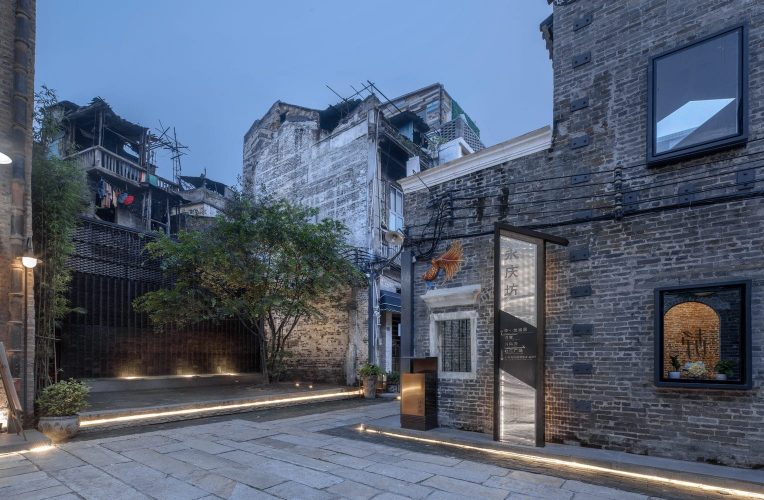One Day, a Project: Renovation of Yongqing Fang in Enning Road District by Lab D+H
First snows, a year of yellow jackets and an earthquake in the Rhône-Alpes region…we can say that last week was full of emotions. On top of that, we add a vulgar skid around the repair of Notre-Dame de Paris and we have our champion of the week.
So obviously, there is no question of architects, young or old, “keeping their mouths shut”. On the contrary.
Here’s a great encouragement to open it even more !
But the subject of this blog is not there (not yet).
No no no, here, we’re mainly talking about…*drum roll* Architecture !
Well, architecture and urbanism, because no matter what you say, the two fields are intimately linked. One of my professors explained to me that if urban planning was a glove, architecture was the hand that slipped into it. Both must then adjust to it in order to complement each other.
After this long introduction, we left for China, in the city of Guangzhou and more particularly for Yongqing Fang in the Enning Road district. This place is particularly known for hosting the former residence of Bruce Lee (just that) as well as these many trendy places (cuckoo clock gentrification) inserted in the middle of a more historic urban fabric.
Lab D+H’s urban development project deals centrally with the question of the metamorphosis of a neighbourhood. One of the justified fears of the designers was to avoid the so-called modernization of the district by pushing out these historic inhabitants and replacing them with a more affluent population. On such subjects, I inevitably thought of the saucy series South Park whose episode “The City Part of Town” (S19/E3) deals with the excesses of gentrification. So yes, when we talk about gentrification, we can take the shortcut and think about the systematic denaturation of emblematic neighbourhoods by copying and pasting world models (with the small and expensive craftsmen, the Starbucks-style coffee revisited and the vegan burger). We can also, and this is what I’m going to do, simply appreciate the treatment of urban space, thinking that places will become what people decide to make of them.
The project can be summed up by different interventions, from sidewalk detail to stairs, spread over a wide area. It is a real acupuncture work carried out by the D+H lab, punctuating the alleyways in a measured way to enhance their identity. Three materials are used : wood, for the warmth it gives off; stone, for this reminder of existing buildings, in masonry brick; and metal, notably Corten steel, whose rust effect colour lends itself to the dialogue between wood and stone. The whole is assembled with finesse, using rectilinear or curved patterns, without overdoing it. Apart from two or three plays of light, especially on the staircase, which I find a bit bling-bling, the project has a pleasant sobriety. The street furniture fits perfectly into the fresco of the existing building, reinforcing the idea of a changing place where damaged traditional houses and renovated buildings with bay windows and black metal joinery can rub shoulders. The water areas are staged by the use of stone and light, contributing to offer us this atmosphere of serenity.
If conclusion should be brought, I would say that plastically, the project has everything to seduce. The too clean and finished aspect, erasing each parcel of indeterminate space by a fountain or a lighting, can however constitute a limit for these places in constant metamorphosis. Faced with this propensity to rationalise everything and make it profitable, shouldn’t we try to preserve unqualified areas? I remain convinced today that there is a need to give the past or future population the possibility to contribute directly, physically, to the development of their living space. So that instead of just passing through, we have this desire and this possibility to live.
Would you like to be kept informed of new blog posts ?
Subscribe to our newsletter !
